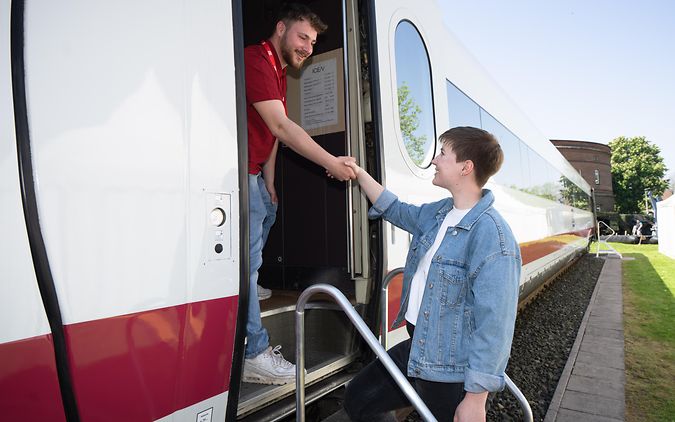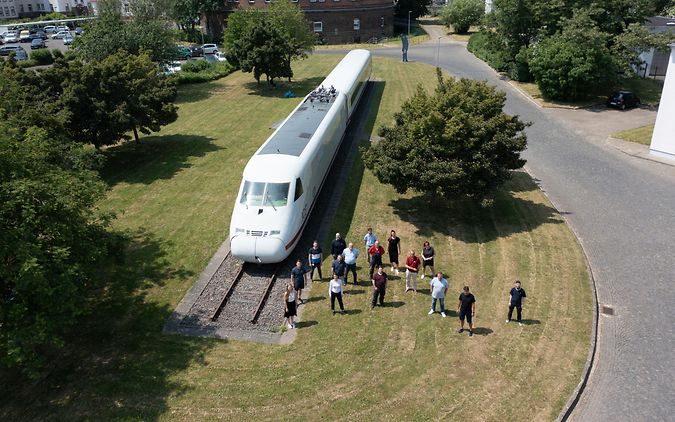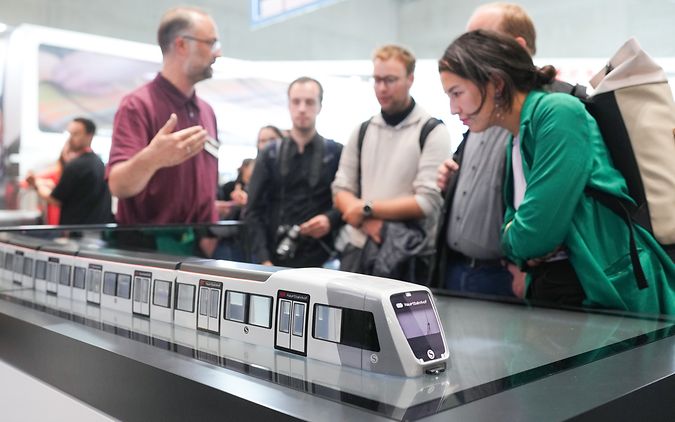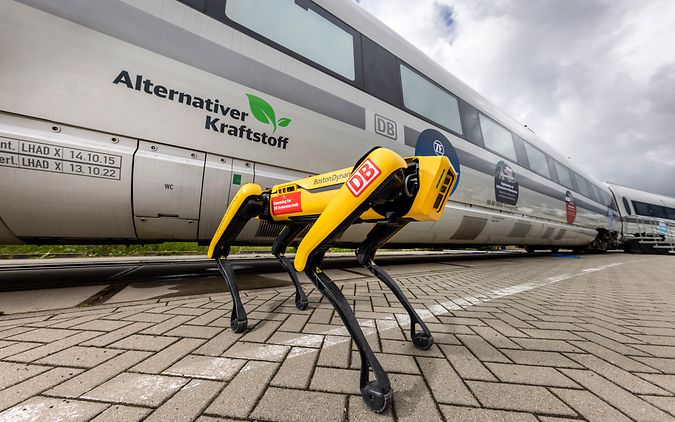Measurement vehicles for your individual needs.
Discover the wide range of possibilities.
Acquire all the information you need here, in detail, about our vehicles and specially trained employees.
High-speed measurement train (ICE-S)
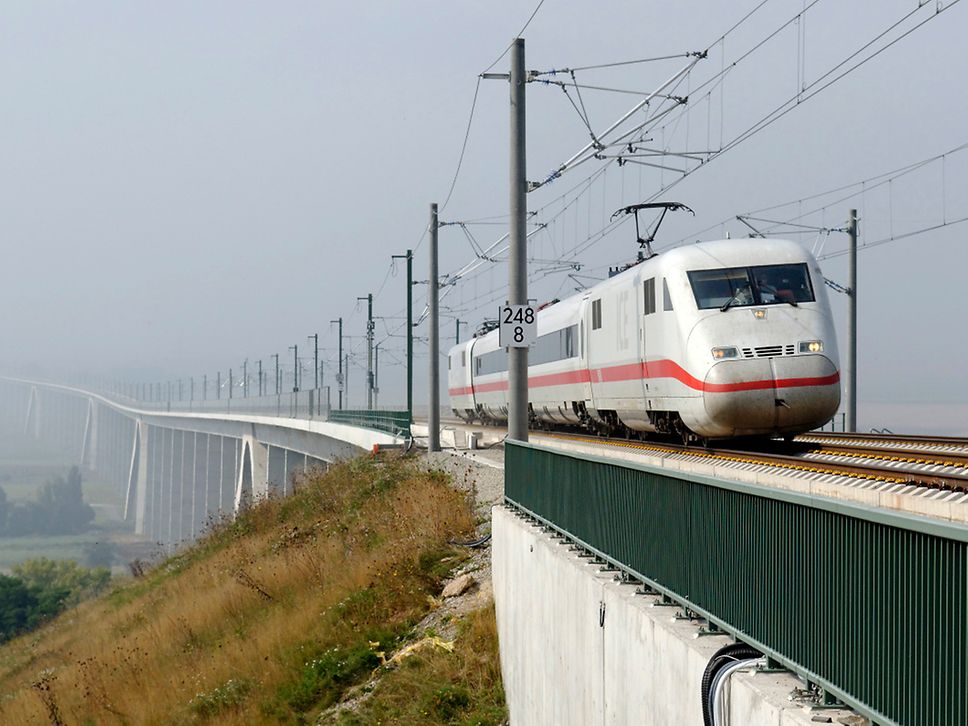
Measurement train for vehicle response measurements (from a rail vehicle and infrastructure perspective) and component testing.
Topic | Details |
|---|---|
| Train configuration:: |
|
| Operation: |
|
| Use: |
|
| Measured quantities: |
|
| Equipment |
|
Tilting measurement train (VT 612)
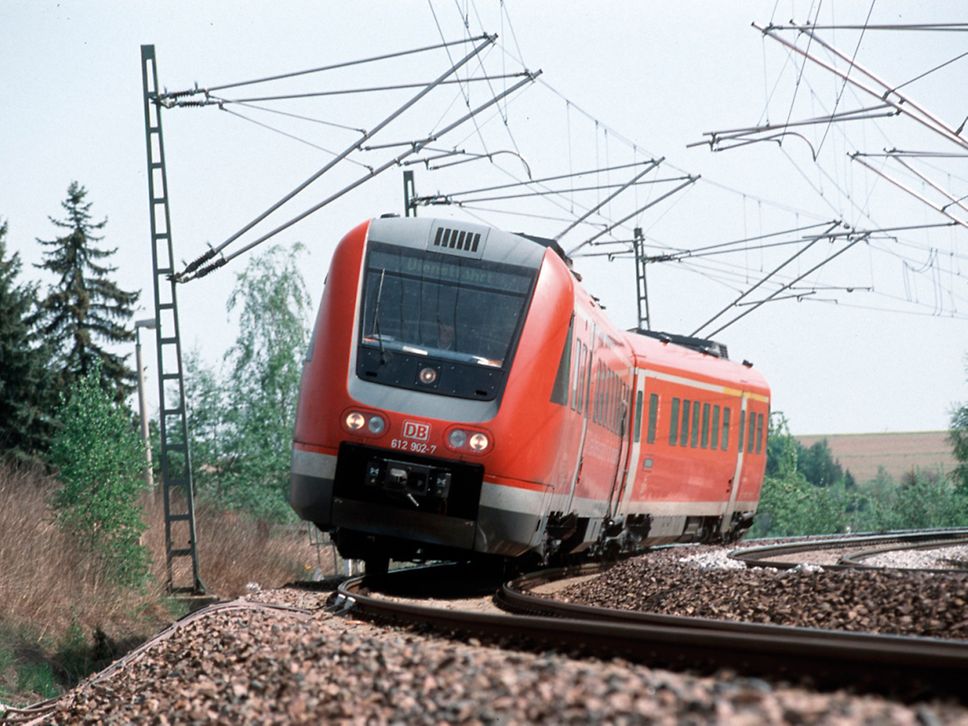
Measurement train for vehicle response measurements and component testing
Topic | Details |
|---|---|
| Train configuration: |
|
Operation: |
|
| Use: |
|
| Measured quantities: |
|
Equipment |
|
Noise measurement train
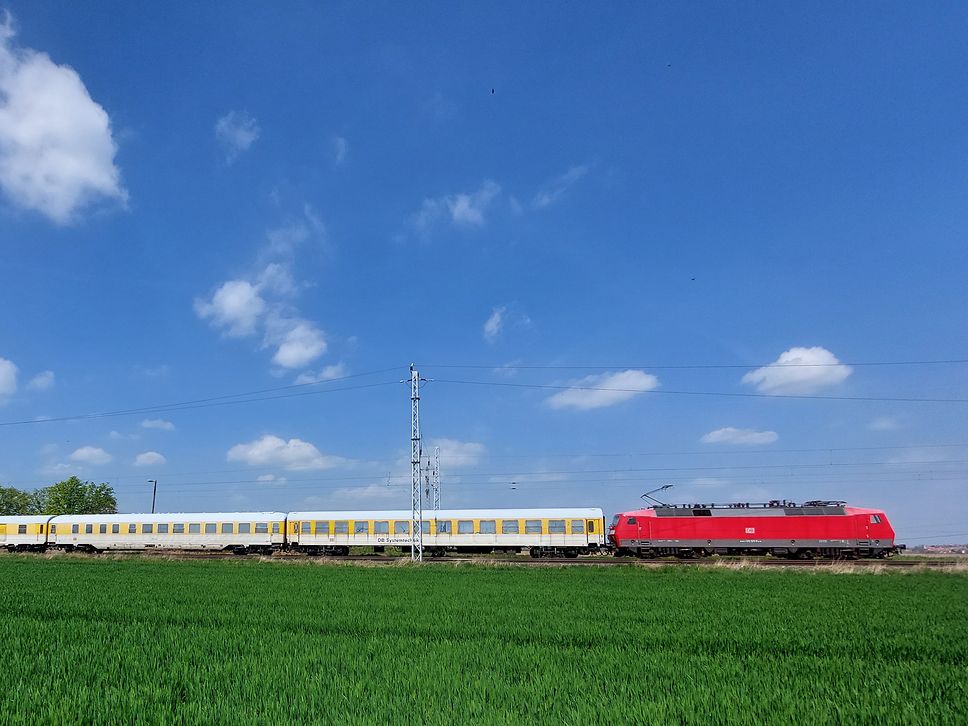
Measurement train for determining the acoustic quality of the running surface of the rail
Topic | Details |
|---|---|
| Train configuration: |
|
Operation |
|
| Use |
|
| Measured quantities |
|
| Equipment |
|
| Quality: |
|
Locomotives
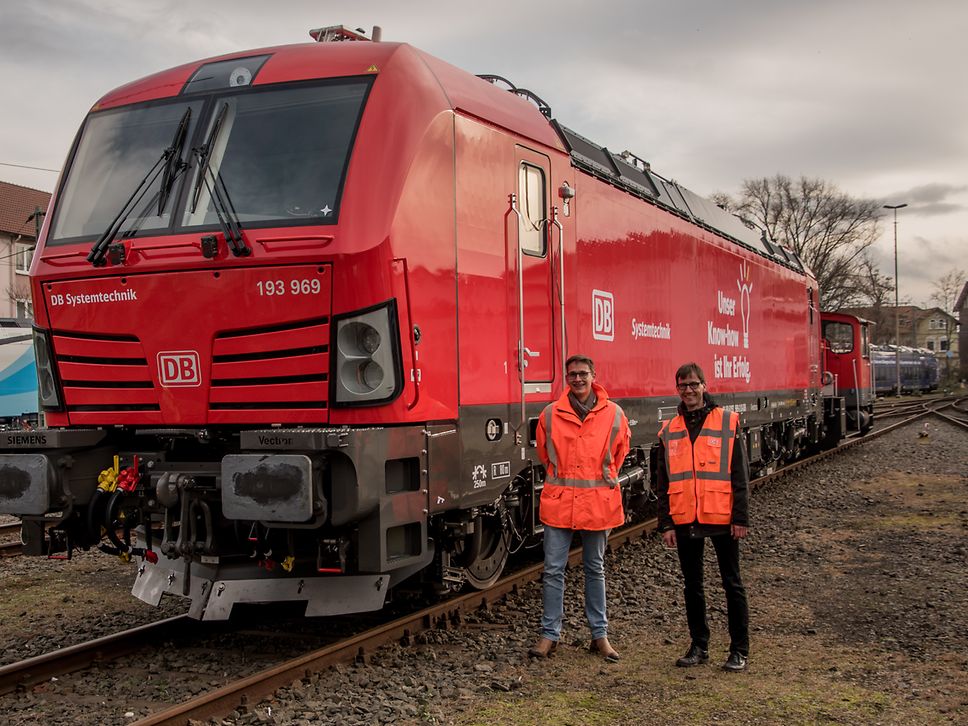
Topic | Details |
|---|---|
Operation |
|
Use |
|
Equipment |
|
Standard measurement car
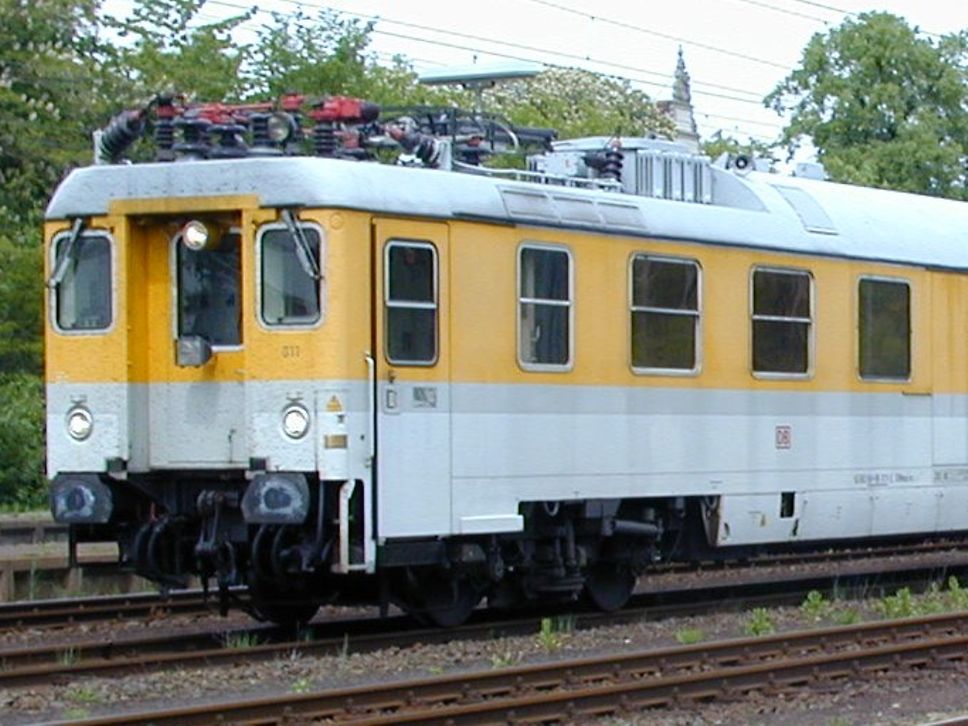
Carriage-like vehicles with special interior fittings
Topic | Details |
|---|---|
Features |
|
Operation |
|
Use | For infrastructure, e.g. measurement of
For rail vehicles, e.g. measurement of
|
Measured quantities |
|
Quality |
|
Driving trailers
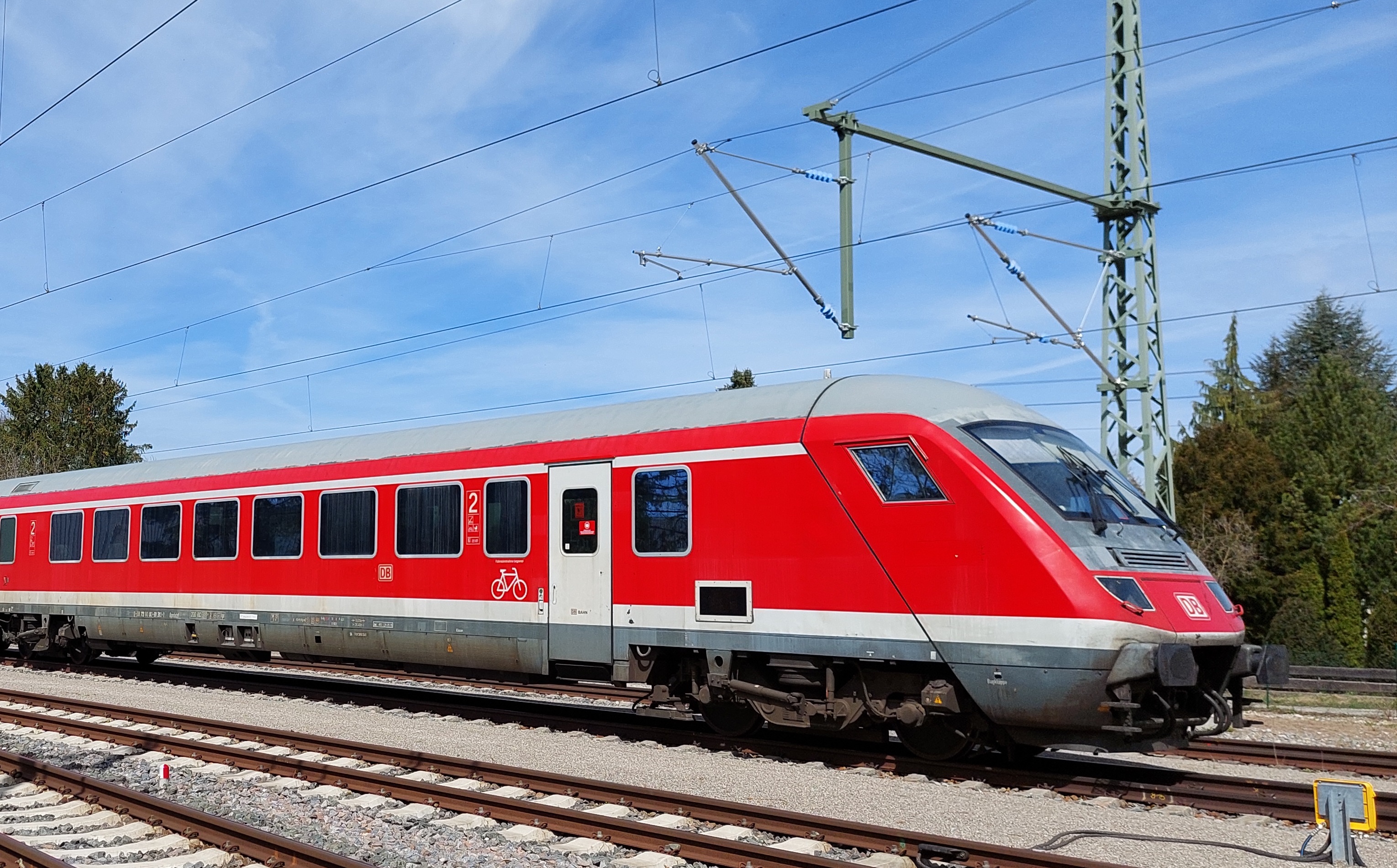
Former InterCity driving trailer with measurement workstations
Topic | Details |
|---|---|
Operation and use |
|
Coupling wagon
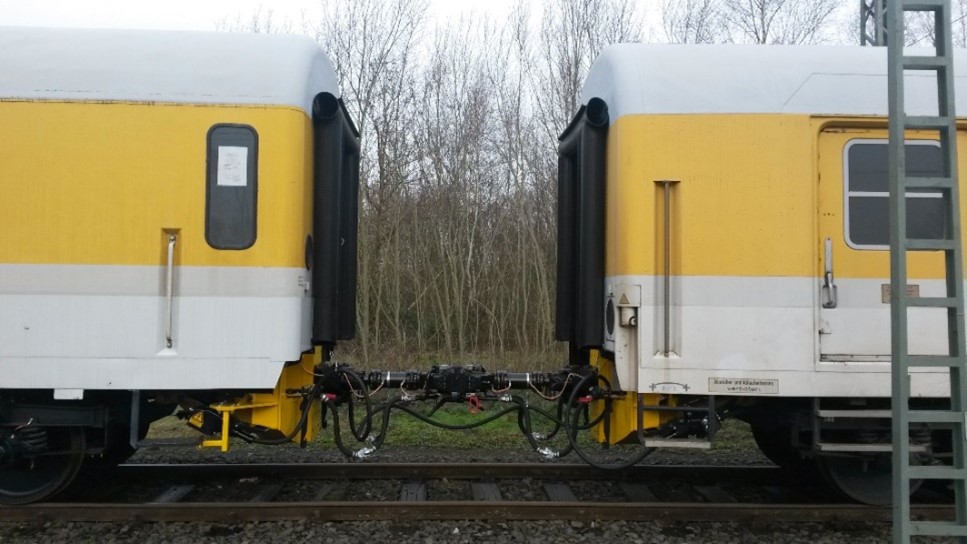
Two former postal and luggage vans, equipped on one side with height-adjustable central buffer coupling (560 mm - 1,040 mm)
Topic | Details |
|---|---|
Operation |
|
Use |
|
Measurement trailer
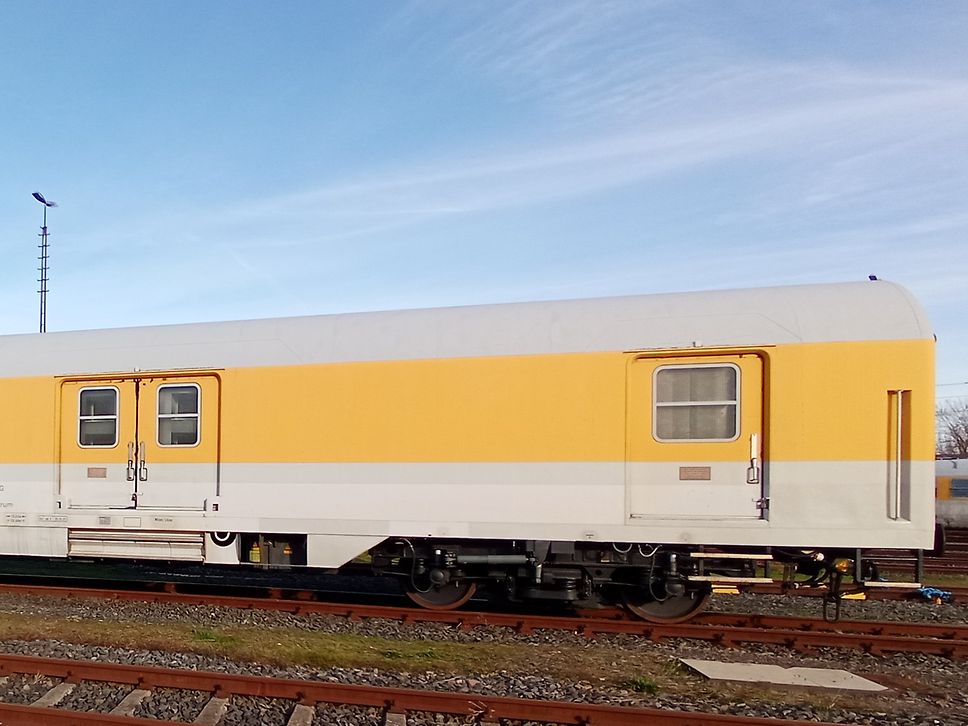
Carriage-like vehicles with the possibility to transport materials and install measuring instruments
Topic | Details |
|---|---|
Operation |
|
Use | Additionally used in measurement trains, e.g. for
|
Train drivers, operational and technical test supervisors
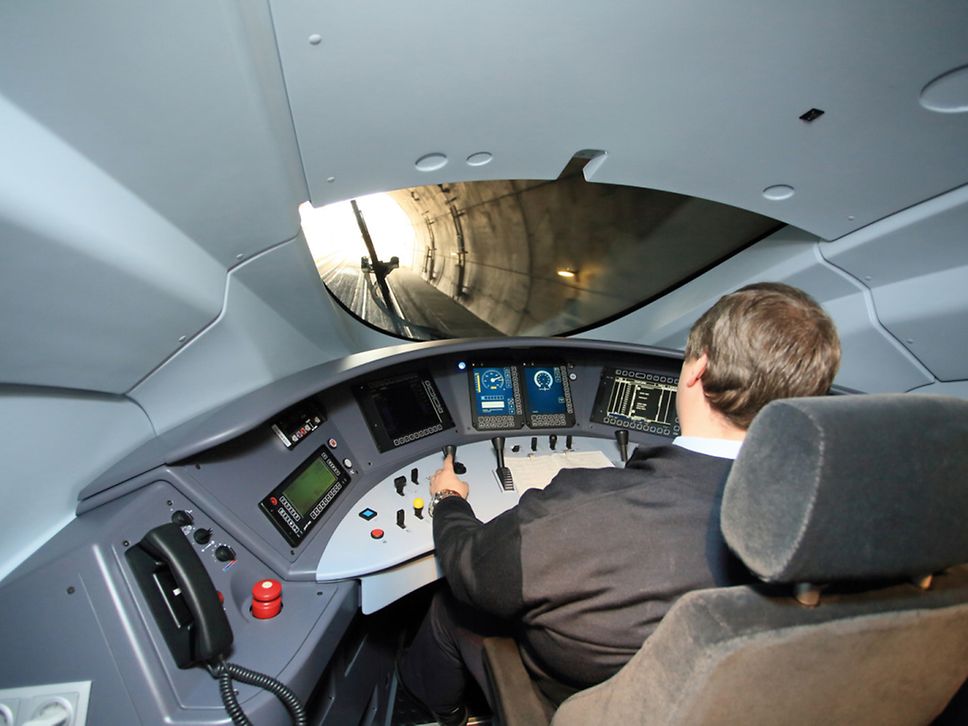
DB Systemtechnik GmbH not only offers test vehicles but also train drivers and rail operation experts for planning and conducting scheduled runs and test runs.
Any questions? Get in touch with us.

Nils Dube
Head of Business Line Engineering
DB Systemtechnik GmbH
5 Völckerstraße
München
80939
GERMANY

Dr. Jochen Kurz
Head of Business Line Maintenance Technology
DB Systemtechnik GmbH
74 Bahntechnikerring
Brandenburg-Kirchmöser
14774
GERMANY

Rupert Lange-Brandenburg
Head of Business Line Digital Products and Services
DB Systemtechnik GmbH
22 Weilburger Straße
Frankfurt
60326
GERMANY

Dr. Lars Müller
Head of Business Line Testing
DB Systemtechnik GmbH
10 Pionierstraße
Minden
32423
GERMANY
